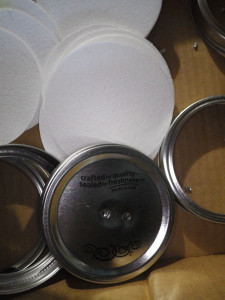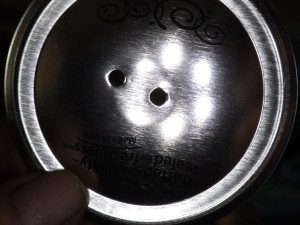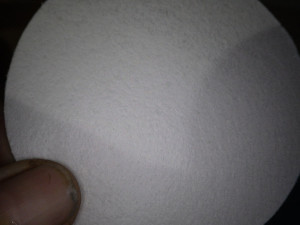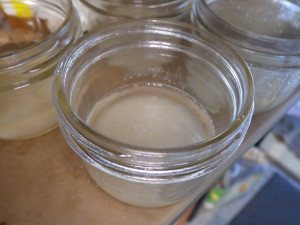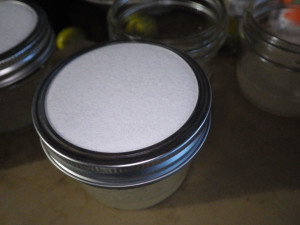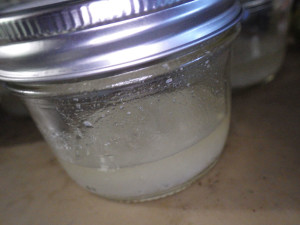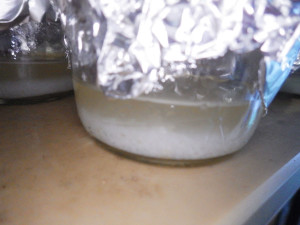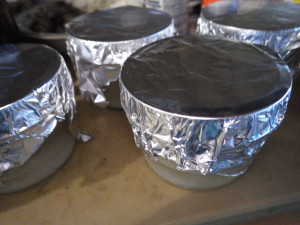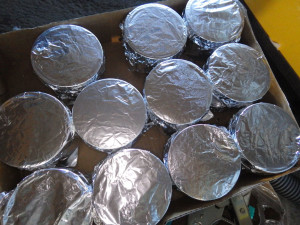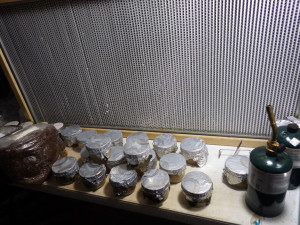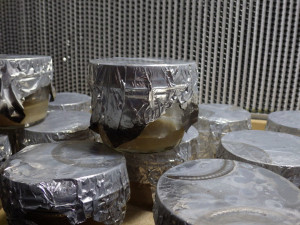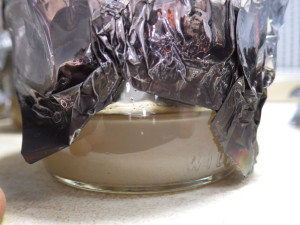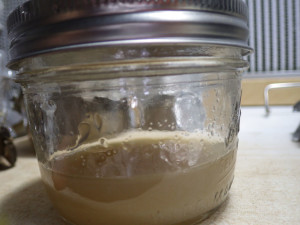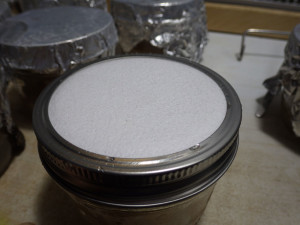Nothing new or original from me here as far as the use of filter disks on jars or using jars for agar.
This is something that has been a valuable tool in maintaining and growing Hericium clones.
Holes were made using an art crafter’s thin-metal hole-punch and installed with the side shown facing down so heating does not seal the edge shut.
Standard heavy filter material as is used in the fungal production industry.
It is some sort of thick porous plastic that holds up to pressure cooking. Looks and feels like it could be polypropylene but I am not sure. Comes in sheets that are most often sold in precut circles. There is some art stock that looks very similar but if held to the light tiny specks of sky are visible through it so it is not the same thing.
Agar that has been shaken cold and quickly poured.
(These could have been poured using hot agar but this is way faster and simpler.)
This was a PDYA so required a lot of swirling during the pouring process and still had a fair amount of excess settling in the last jar.
Used:
18 grams Uncle Ben’s Instant Potato Flakes
14 grams of bacteriological grade agar
3 grams of dextrose
1 gram of Diamond-V yeast extract (Don’t mistake dark spots as contaminants later!)
750 ml water (tap water which is nonchlorinated from a protected well)
Metal foil just keeps filter disk from getting saturated and potentially compromisable.,
These get stacked in the PC and cooked for 25 minutes at 15 psi.
A cooked bag straight out of the PC can be seen on the left.
Jar on far left above shows settling due to setttling challenge when starting with cold agar. It has never caused problems and generally only affects the last jar poured.
This is a rather high priced way to make agar plates compared to petri dishes.
For long-lived cultures like Hericium they can be quite valuable as the thick agar lasts longer before drying. And there is enough room to prevent breaching the container if the Hericium forms microfruit.
Plus these can go straight into a refrigerator and enjoy Winter even if it is the dead of summer. This is how we keep our working cultures alive and happy during summer heat (we also maintain master slants).
They have also proven to be a good tool when cloning Hericiums but the tissue selection is the most important aspect. If it is not both clean and not-at-all waterlogged another choice should be made if possible. It is feasible to get clones from soggy material but they typically require a lot of time and effort to chase clear of molds and other contaminants. This problem is dramatically reduced or eliminated when starting out with a good tissue sample. Inside of thick sections of branches or inside of the basal sections have given great results as have the use of branchy tips from microfruit forming inside of jars or when fruiting has occurred inside of a bag.
